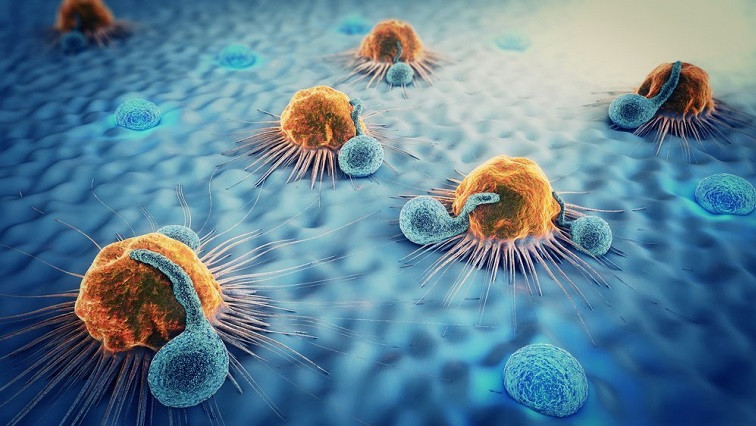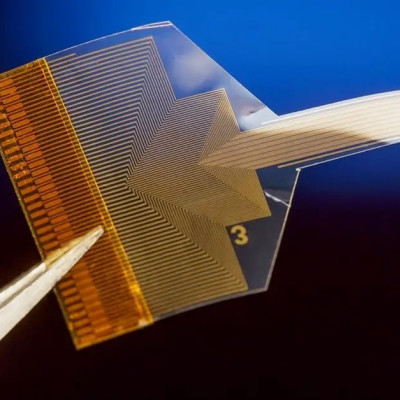Researchers at Brigham and Women's Hospital, a founding member of the Mass General Brigham healthcare system, have developed a new nanomedicine therapy that delivers anticancer drugs to lung cancer cells and enhances the immune system's ability to fight cancer. The team showed promising results for the new therapy in cancer cells in the lab and in mouse lung tumor models, with potential applications for improving care and outcomes for patients with tumors that have failed to respond to traditional immunotherapy. Their findings are published in Science Advances.
“Nanoparticles have been used for years to deliver targeted medication to tumor cells, while immunotherapy has also had a paradigm-shifting impact on how we treat cancer, by stopping cancer cells from evading our immune system,” said lead author Tanmoy Saha, PhD, an instructor of medicine and researcher in the Division of Engineering in Medicine at the Brigham. “Here, we’ve essentially connected these two approaches in one drug delivery system to treat non-small cell lung cancer.”
Lung cancer is the leading cause of cancer death globally, accounting for over a quarter of all cancer-related deaths. Non-small cell lung cancer (NSCLC) is the most common form, making up roughly 85 percent of all lung cancer cases. One of the popular treatment methods for NSCLC is to use immune checkpoint inhibitors, a class of drugs that block certain proteins that stop the immune system from killing cancer cells. However, most patients with NSCLC do not respond to these drugs, primarily because the treatment only targets one protein (most commonly PD-L1), and that is not abundantly expressed in most lung cancer tumors. As a result, many patients must undergo a combination of chemo and immunotherapies, resulting in enduring side effects and toxicities.
This new therapy works by bringing a nanoparticle filled with a cancer-fighting drug straight to the tumor site, while antibodies attached to the nanoparticle bind to two different proteins (CD47 and PD-L1) on cancer cells. This dual approach allows both the innate and adaptive immune systems to locate and destroy cancer cells while minimizing the toxicities commonly associated with existing cancer treatments.
“This system operates with a kind of Velcro effect. Rather than just looking for one protein on a cancer cell that the antibody can grab onto, these nanoparticles have two,” said senior author Shiladitya Sengupta, PhD, an associate professor of medicine and bioengineer in the Division of Engineering in Medicine at the Brigham. “So, if a cancer cell does not express one of the proteins that our nanoparticle targets, it can still attach to the other one, and deliver the drug loaded into the nanoparticle straight to the cancerous tissue.”
The researchers set out to find which proteins were expressed by lung tumors. They screened more than 80 human lung cancer patients’ tissue. Once the proteins were identified, they selected antibodies to target them. Next, they functionalized the antibodies with a nanoparticle that was already loaded with an anticancer drug.
Saha and his colleagues then tested the nanoparticle’s efficacy by first visualizing how well the antibodies bound to cancerous cells in the lab. They performed a series of experiments to assess and visualize the nanoparticle's binding and drug delivery capabilities. Subsequently, they tested the complex's efficacy in mouse models of two forms of lung cancer. They found that the mice’s cancer cells internalized the drug, leading to a decrease in tumor size without any major side effects or toxicities.
The study's limitations include that, so far, the therapy has only been tested on human tissue in the lab and in mouse models. It must undergo much more exhaustive toxicology studies before moving on to clinical testing. Looking ahead, the researchers hope to adapt this technology to treat other types of cancer by exploring additional antibodies and treatments that could work with this nanomedicine approach.
"While we are seeing some success with this drug delivery platform in preclinical testing, it's important to remember that mouse and human physiology are quite different. We need more studies before we can bring this concept to clinical trials, but we’re excited to see how this approach could transform cancer care," said Saha.
Read the original article on Brigham and Women's Hospital.







